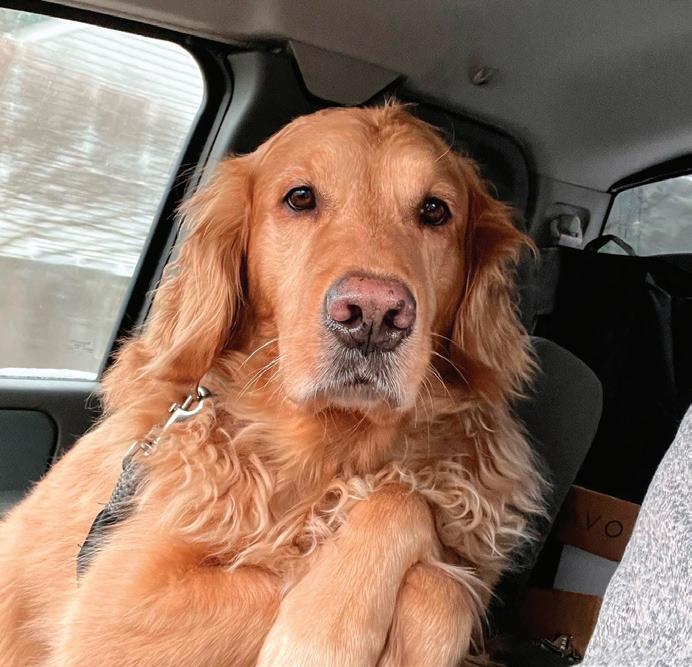
3 minute read
Spotlight: Gamze Goksoy
Turkish Rescue Partner Gamze Goksoy
Most likely, you will never meet Gamze Goksoy, who writes like a poet, lives on a farm in rural Turkey with 32 German Shepherds and mongrel dogs that “plod their beautiful kissable paws along the floor,” and passionately, sometimes with joy and sometimes with heartache, rescues Turkish Golden Retrievers before sending them into the arms of American adopters. Most likely, you will never meet her, but she has been one of the Turkish rescue partners you need to thank.
Advertisement
Gamze was the child of busy physicians, and she describes herself as raised by cats, dogs, rabbits, and birds. “Home meant wherever they were present,” she writes, in an interview conducted through an online translation service, using written questions and answers. She studied Architecture and Urban Planning in Istanbul, working in that field for decades. Sometimes her German Shepherd came to work with her, and if he were waiting in the car and bored, he would toot the horn. When the enthused apartment barking of two dogs became too loud for her urban neighbors, Gamze moved out of Istanbul, an hour and a half away to the country. She created a farm, there; initially somewhere to board, breed and train dogs, but eventually, a fulltime respite where she could rescue and rehabilitate them. “I think my dogs rehabilitate ME,” she said correcting the usual perception. “Without them, I am homeless.”
Her dogs arrive from all over Turkey, some through the calls of local animal lovers, others by plane from distant provinces. They were holiday gifts, abandoned at the end of holidays. They were breeders’ dogs, outbred and abandoned in forests. They were shelter dogs, caged for years and abandoned to streets.
She welcomes them democratically; “for me, all dog breeds have equal rights when it comes to being rescued,” she writes. “Whether it is Golden Retriever or some other breed, none of them are different from each other on the issue of the destiny they share.”
Then Gamze intervenes in their destiny. With a vet, she treats their viral diseases, skin conditions, malnutrition, and the surgical requirements of fractures or improper sterilizations. There are vaccinations and chip placements, of course. And she takes on the sequelae of emotional neglect trauma, fearfulness, food aggression. “To trust and to love,” she insists, “these are the things that bind us together.” Her dogs range from 3 months to 11 years and stay as long as is necessary, some for months, others for years. “Some of them will never be re-homed, and they will age with me.”
Four years ago, she began to send the Goldens who rehabilitate her to shelters in the US, including YGRR. In addition to their outer and inner care, she starts to “box train.” On a 12-18 hour plane flight, in the baggage or cargo sections, crates have to feel like home in the air.
Once a dog is accepted, the process that had been taking months or years suddenly speeds to a breathtaking pace. Each dog arrives in the US with a packet of paperwork, including a passport, rabies certificate, air flight information, and USDA approval. The USDA application—filed by YGRR—may take five days to process, but the import permit awarded is valid for only 10. Five days to get a permit, ten days to arrive. The administrative window of time for entering the country is narrow. You hear the ticking.
“The day of flight always starts with great excitement,” Gamze writes. “But the moments of farewell are extremely emotional. I bid my children farewell with tears, prayers, and kisses…They are not alone in the universe.” In all honesty, interviews conducted by writing are often awkward. They feel dialogue-less: an artificial volley of question, answer, question, answer. Somehow, Gamze answers questions from 4,800 miles away, yet it feels like she is in the same room. “Every rescue and every return to life,” she writes, “has been the best memories for me. I cannot even sort all of my joys.”
“Most of the time,” she adds, “I cannot even find the words to describe what I feel. I am not a poet.”
But she is.










